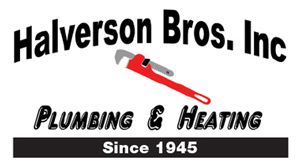
A furnace is usually a background player at home, ensuring you're warm during the cold winter months. It frequently isn't noticed until a malfunction appears.
One source might be that your furnace has a cracked heat exchanger. It can potentially be hazardous, so it’s worthwhile to learn the symptoms of a cracked heat exchanger and what to do if you suspect that might be the problem.
What Is a Heat Exchanger in a Furnace?
A heat exchanger helps transition heat from the combustion chamber of your furnace to the air that flows throughout the system. It usually does this via coils or tubes that warm the air while functioning as a barrier to keep gas produced in the combustion chamber, called flue gasses, from escaping out into your home.
Is a Cracked Heat Exchanger Dangerous?
Because of its central role, it isn't surprising that a damaged heat exchanger can pose a risk. Cracks in the heat exchanger can permit dangerous gasses – like carbon monoxide, which can be lethal – to circulate throughout your home.
For obvious reasons, don't ever turn on your furnace if you believe you're dealing with a cracked heat exchanger, as letting it run could make the entire household ill. Reach out to an HVAC professional right away if you are worried your heating has a cracked heat exchanger that should be repaired.
Four Signs of a Cracked Heat Exchanger:
- Furnace shuts off: A cracked heat exchanger may cause your furnace to turn off.
- Unusual Smells: If the air escaping your furnace has a strong chemical scent, it could be an indicator that gasses are leaking through cracks in your heat exchanger. These gasses, which will often smell like formaldehyde, are a common warning sign.
- Carbon monoxide alarm initiates or you feel health problems: If a cracked heat exchanger is releasing carbon monoxide inside your home, your carbon monoxide alarm should go off or family members could experience signs of carbon monoxide poisoning. Complications include headaches, dizziness, weakness, nausea, vomiting or feeling tired. If an alarm goes off or you feel unusually tired, exit the home right away and then call for help.
- Soot: If you notice black sooty accumulating on the exterior of your furnace, it’s more evidence something may be seriously wrong.
What You Should Do if the Furnace Heat Exchanger is Cracked
If you worry your furnace has a cracked heat exchanger, hire a professional experienced in furnace installation Menomonie and western Wisconsin as soon as possible so they can inspect your system and, if necessary, start a furnace heat exchanger replacement. Costs will differ depending on the situation, but estimates can roughly suggest $1,000 to $3,000.
Estimates aside, the good news is that heat exchangers are regularly included in the warranty. You’ll want to confirm the warranty paperwork on your furnace, since while the warranty may not cover the entire cost of repairs, it still may significantly lower your bill.
How to Prevent a Cracked Heat Exchanger in Your Home
One of the best ways to avoid problems in your furnace overall is through routine furnace maintenance. Furnaces work the best when they work efficiently. Contacting a skilled professional to inspect your furnace for broken-down parts, clogged filters and other common problems can keep you from getting a big bill later on.
It’s also beneficial to take a look at your furnace filters every few months – it’s recommended some filters be swapped out every 90 days or sooner if they are dirty or grimy. While the filters aren't connected to the heat exchanger itself, the strain of dragging air through a clogged filter makes the entire furnace work more vigorously to do its job. And the harder your furnace has to work, the more deterioration components like the heat exchanger will endure.






